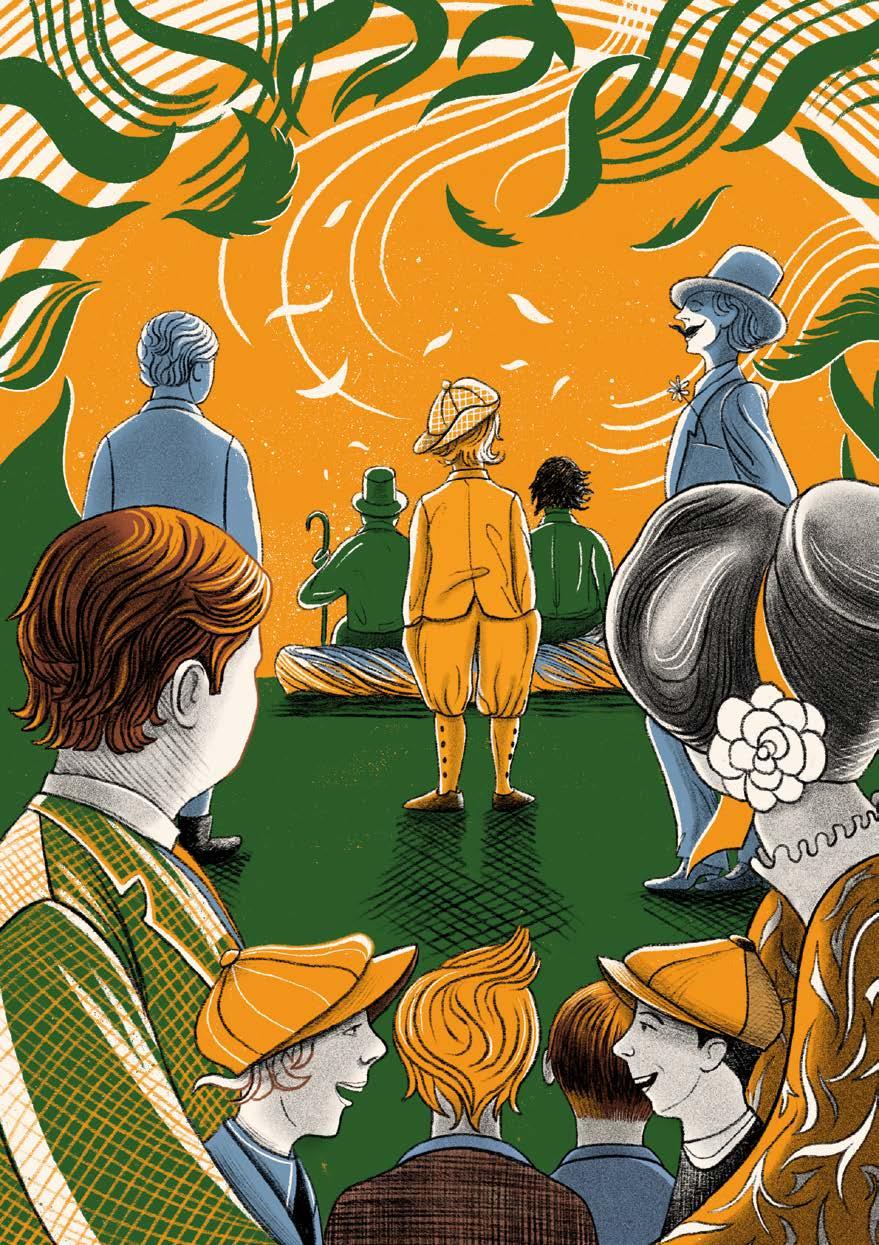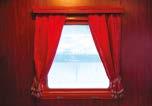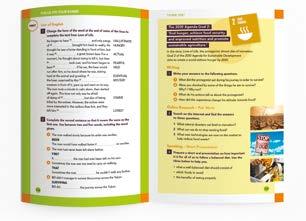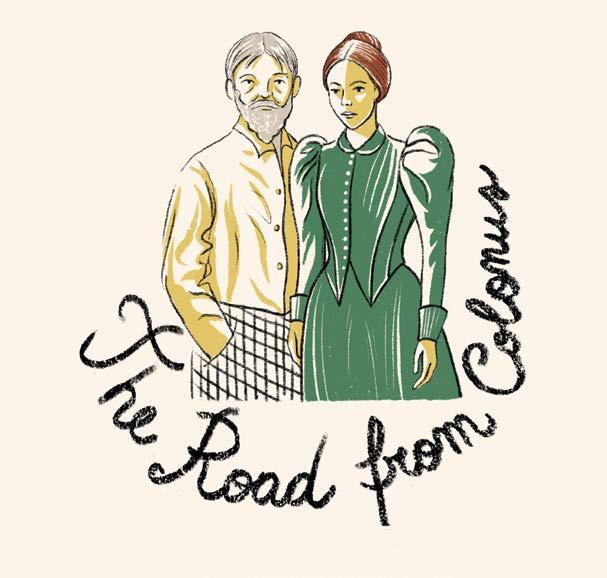Charles Dickens
Charles John Huffam Dickens (1812-1870) is considered one of the greatest English novelists of the Victorian Era. He’s greatly admired for his rich storytelling and ability to create memorable characters, which made him hugely successful during his lifetime and beyond. Indeed, his works continue to be widely read and studied even now. He wrote constantly, and produced a huge amount of literature including 15 novels, five novellas, hundreds of short stories and non-fiction articles. This anthology features ‘The Child’s Story’, one of his short stories, which describes a traveller on a ‘magical’ journey that represents the cycle of life.
Early Life
Dickens based two of his characters on his mother, Elizabeth: Mrs Micawber in the novel David Copperfield, and Mrs Nickleby in the novel Nicholas Nickleby.
Charles was born on February 7, 1812 in Portsmouth, England. He was the second of eight children of Elizabeth Barrow and John Dickens. His father was a clerk in the Navy Pay Office. Charles had a normal childhood until 1824, when his father was sent to prison for debt along with the rest of the family, except for Charles. Young Charles was forced to work in a factory to support himself. Thankfully, after a few months in prison, John Dickens was able to pay off his debts, and Charles could then finish his studies. This period of his life, which left a lasting impression on him, greatly influenced his views on poverty and the terrible conditions of the working class. Indeed, this is reflected in the main themes of his novels that include poverty and social inequality. It also explains why he fought constantly for children’s rights, education, and other social reforms during his lifetime.
London’s population grew rapidly during the 19th century. This led to major problems with overcrowding and poverty. Many workers lived in terrible conditions, and were even left to die of hunger on the city streets.
Poor children often had to work to earn money for their family. As a result, many could not go to school.
8 Dossier
In the UK, the Victorian Era was the period of Queen Victoria’s reign from 1837 to 1901.

Writing and Famous Works
Charles Dickens wrote under the name ‘Boz’ for a few years before using his real name.
“The most important single novel of the Victorian era,” (said by author, John Sutherland about The Pickwick Papers)
Charles first started writing as a political journalist in 1832. His first published work “Sketches by Boz” was a collection of observations about London life. However, it was the huge success of his first novel, The Pickwick Papers, published in 1836, that made everyone sit up and notice Charles’ literary skills.


In 1836, Charles became editor of a magazine but continued writing novels as well. These were often published monthly in magazines before being published as books. Some of his most famous works include Oliver Twist (1838), David Copperfield (1850), A Tale of Two Cities (1859) and Great Expectations (1861).
Oliver Twist was the first Victorian novel with a child as the main character, and even Queen Victoria read it.
A Tale of Two Cities is a historical novel set in London and Paris before and during the French Revolution.








The four social classes in the Victorian Era were the upper class, the middle class, the working class, and the underclass. The underclass were those who were poor and helpless and needed support from others.
Dickens’ writings show a great sense of humour and irony and, through his often larger than life characters, the reader can learn about the good and bad aspects of Victorian society and its class system.




Through his writings, he succeeded in making Victorian public opinion more aware of the conditions of the poor and this helped bring about some positive social changes.
9
This terraced house in Bloomsbury is now an author’s home museum, and it’s where Dickens lived from March 1837 to December 1839.



Household Words was an English weekly magazine edited by Charles Dickens in the 1850s.
All the Year Round, was a Victorian weekly literary magazine founded and owned by Charles Dickens, after he abandoned Household Words due to an argument with his publisher.

Marriage and Middle Years
While writing The Pickwick Papers, Charles met Catherine Thomson Hogarth. They got engaged and after a year were married in London in 1836. After the first of their ten children was born in 1837, they set up home in Bloomsbury, London, where their next two children were born. Charles’ younger brother, Frederick, and his wife’s younger sister, Mary, moved in with them. Charles became very attached to Mary, who died in his arms after a short illness in 1837. Her death shocked him so much that he stopped working for some time.
In 1842, Charles and his wife went on their first trip to the United States and Canada, where his works were already popular. He also lived for a short time in Italy (1844) and had many holidays in France. During this time, Charles was also the publisher, editor and major writer of the journals Household Words and All the Year Round (1858–1870), and was strongly interested in politics, both at home and abroad. He often used Household Words to express his political beliefs, like his support for Giuseppe Garibaldi.
Over the years, Charles and his wife began to grow apart and finally in 1858, they were legally separated, after Charles met and fell in love with an actress called Ellen Ternan. Charles was 45 years old at the time, while Ellen was only eighteen.




About Italy, Dickens said: “I feel for Italy almost as if I were an Italian born.”
10
Quote by Dickens about Gad’s Hill.
Final Years
Charles continued to live in London until 1860, then he moved permanently to a country house, Gad’s Hill. Charles was deeply attached to Ellen Ternan, and their relationship lasted until his death.
During these final years, Charles continued writing, but he spent more time performing public readings of his works, which gave him the chance to make use of his theatrical skills. He loved this relationship with the public and seeing their reactions to his stories.
His last completed novel, Our Mutual Friend (1864-65) continues to criticise Victorian class values and the indifference of ‘respectable’ society.
In April 1869, he became ill while in America and had to abandon his reading tour. Back in London, he began writing another novel, The Mystery of Edwin Drood, which he never managed to finish. He decided to do one last season of readings in London, ending with the famous speech, “From these garish lights I vanish now for evermore…” These words were used on his funeral card less than three months later. He died suddenly on June 9, 1870 and is buried in Poets’ Corner in Westminster Abbey. “I









More than 100 poets and writers are buried or have memorials in Poets’ Corner, including Shakespeare and Jane Austen. The first poet to be buried there in 1400, was Geoffrey Chaucer, author of ‘The Canterbury Tales’.


















11
used to look at it as a wonderful Mansion (which God knows it is not) when I was a very odd little child with the first faint shadows of all my books in my head - I suppose.”
Complete the Fact File about Dickens. 1 Full name: 2 Date of birth: ______________________________ 3 Place of birth: ______________________________ 4 Main themes in novels: _____________________ ____________________________________________ 5 Died: ______________________________________
The Child’s Story
The story, in its language and structure, is like a fairy tale beginning with the classic phrase, ‘Once upon a time’.
This magic journey is the cycle of life.
Each person the traveller meets represents a stage in life, so here the child represents childhood.
2
Once upon a time, a traveller set out on a magic journey. It seemed very long when he first started it, but much shorter by the time he’d reached half way.
He’d been travelling along a dark path for some time, when suddenly he met a beautiful child, and he said, ‘What do you do here?’ ‘I play all the time,’ answered the child. ‘Come and play with me!’
So he played with that child all day long, and they were very merry*. Everything was perfect. When it was nice, the water sparkled* in the sun shining in the blue sky, while the birds sang and butterflies flew among the green leaves and lovely flowers. When it rained, they loved watching the falling drops, and the fresh smell they left behind. When it was windy, they listened to it blowing and had fun imagining where it came from, and what it was saying as it rushed past.
However, the snow was the best of all, and they loved watching it fall fast and thick, covering the paths and roads in a silent, white blanket.
merry cheerful, lively sparkle shine brightly
14
They had plenty of toys too, the best in the world. There was also a huge variety of picture-books to choose from, with stories all about swords and slippers and turbans, and giants* and fairies and blue-beards, and caverns and forests, and Valentines and Orsons: and all new and all true.
But, one day, all of a sudden, the traveller lost the child. He called to him again and again, but got no answer. So, he went on his way alone for a while, until at last he met a handsome boy.
giant (here) an imaginary being of human form but of superhuman size
Blue-beard is an old French story about a rich man who kills his wives.
Valentine and Orson is the story of twin brothers, abandoned in the woods in childhood. Valentine is brought up as a knight at the court of Pepin, while Orson grows up in the woods and is a wild man.
The fact that the child thinks that all these fantastic stories are new and true shows the innocence typical of a child.

The traveller and the child.
The
Charles Dickens
Child’s Story
Twelfth cakes used to be eaten on January 5th to celebrate the night before the twelfth day after Christmas when Christmas festivities end.
Dickens’ father loved the theatre and often took Charles and his other children to see shows while they were growing up, so that they too would fall in love with this type of entertainment.
3
So, he said to the boy, ‘What do you do here?’ And the boy said, ‘I spend my time learning. Come and learn with me.’
So, he learned about the planets with that boy, and about the Greeks and Romans, and much more, but he soon forgot a great deal* of it. They didn’t only spend all their time learning, but had a lot of fun too. They rowed up the river in summer, and skated* on the ice in winter; they walked and went horse-riding, and they played all kinds of games including ball games like cricket, and nobody could beat them. They had holidays too, and ate Twelfth cakes, and had parties where they danced till midnight. They also went to theatres where they saw all the wonders of the world. They had many dear friends who were all young like the handsome boy, and they promised to remain friends all their lives.
However, one day, in the middle of all these pleasures, the traveller lost the boy as he’d lost the child. He called the boy again and again, but it was no use. So, he went on his way alone for a while, until at last he met a young man. So, he said to the young man, ‘What do you do here?’ And the young man said, ‘I’m always in love. Come and love with me.’
a great deal a large amount skate

16 Life is a Journey
Charles Dickens The Child’s Story
So, he went on his way with that young man, and soon they came across* one of the prettiest girls ever to be seen – just like Fanny in the corner there – and she had eyes like Fanny, and hair like Fanny, and she laughed and blushed* just like Fanny is doing at the moment while I’m talking about her. So, the young man fell in love immediately – just like Somebody I won’t mention, did with Fanny the first time he came here. Well, he was teased* sometimes – just like Somebody used to be by Fanny; and they quarrelled sometimes and then made up*, just like Somebody and Fanny used to do. They sat in the dark, and they wrote letters every day, and were only happy when they were together. They got engaged at Christmas and sat close to one another beside the fire, and they were going to be married very soon – just like Somebody I won’t mention, and Fanny!
But, the traveller lost them one day, in the same way as he’d lost the rest of his friends, and after calling to them to come back, which they never did, he continued his journey again, as he’d done before. So, he went on his way alone for a while, until at last he met a middle-aged gentleman.
So, he said to the gentleman, ‘What do you do here?’ And the gentleman answered, ‘I’m always busy. Come and be busy with me.’
come across meet or find by chance blush become red in the face because you’re shy or embarrassed tease make fun of someone in a playful way make up (here) to forgive someone and be friendly with them again after an argument
Fanny was the name of Dickens’ elder sister, Frances Elizabeth Dickens, who the girl is modelled on.
The ‘Somebody’ probably refers to Fanny’s lover and future husband, Henry Burnett.
17
In the story, the journey starts in spring, so nature and its seasons reflect the same cycle of life as the man’s journey.
So, he began to be very busy with that gentleman, and they went on through the wood together. The whole journey was through a wood. At first, it’d been open and green, like a wood in spring; now it was becoming thick and dark, like a wood in summer. The gentleman wasn’t on his own, but was with his wife, who was about the same age as him, and they had children too. So, they all travelled together through the wood, cutting down trees, and making a path through the branches and the fallen leaves, and carrying heavy loads, and working hard.
Sometimes, they came to a wider part of the path, that was long and green, and that led into deeper woods. At a certain point, they heard a tiny voice in the distance crying, ‘Father, father, I’m another child! Wait for me!’ Then they saw a very small figure approaching, getting bigger as it ran to join them. When the child arrived, they all kissed and welcomed it and then they all went on together.
Sometimes several wider paths appeared all at once, and they stopped and stood still, until one of the children said, ‘Father, I’m going to sea,’ and another said, ‘Father, I’m going to India,’ and another, ‘Father, I’m going to seek* my fortune,’ and another, ‘Father, seek look for, try to find
18 Life is a Journey
I’m going to Heaven!’ So, they said their goodbyes with tears in their eyes, as each child went on its way; and the child who went to Heaven, rose into the golden air and vanished*.
Whenever one of the children left, the traveller noticed that the gentleman always glanced up at the sky above the trees, where the sun was beginning to set. He also noticed that the gentleman’s hair was turning grey. They could never rest for long though, because they had their journey to do, and they always had to keep themselves busy.
When there were no children left, the traveller, the gentleman and his wife continued on their way. The wood was now yellow and brown, and the leaves began to fall from the trees. While they were walking along another darker wide path, the woman suddenly stopped and said, ‘My husband, I’m called.’ They listened, and they heard a voice much further along the path calling, ‘Mother, mother!’
And the father said, ‘Please, not yet. The sunset is very near. Please, not yet!’
But the voice didn’t listen to him, even if the man’s hair was now all white and tears ran down his cheeks, and it cried, ‘Mother, mother!’
Dickens uses a metaphor here to explain that the child dies.
vanish disappear suddenly
The voice they hear calling ‘Mother, mother!’ is that of the child who’d said: ‘I’m going to Heaven!’ The child is calling his mother to join him.
19 Charles Dickens The Child’s Story
The day beginning with sunrise and early morning, and ending with sunset, reflects the natural cycle of life.
The old man has lost nothing because he has all these beautiful memories.
The old man is surrounded by his memories.
Then, the mother kissed her husband as she moved away, and then she was gone, leaving him and the traveller alone together. So, they carried on their journey until they came almost to the end of the wood, where they could see the sunset shining red in front of them through the trees.
But, once more, as he was breaking his way among the branches, the traveller lost his friend. He called him again and again, but there was no reply. He came out of the wood and as the sun was going down, he came across an old man sitting on a fallen tree. So, he said to the old man, ‘What do you do here?’ And the old man said with a calm smile, ‘I like to remember. Come and remember with me!’
So the traveller sat down beside that old man, facing the peaceful sunset; and all his friends came quietly back and stood around him. The beautiful child, the handsome boy, the young man in love, the father, the mother, and children; every one of them was there, and he had lost nothing. So, he loved them all, and was kind and patient with them all, and was always pleased to watch them all, and they all respected and loved him. And I think the traveller must be yourself, dear Grandfather, because this is what you do to us, and what we do to you.
20 Life is a Journey

Reading Comprehension
1 Match the characters to the correct description.
1 the child
2 the boy
3 the young man
4 the middle-aged gentleman
5 the old man
Writing
a in search of love, a dreamer
b hard-working and responsible for his family
c curious, eager to learn, energetic and light-hearted
d patient, kind, full of memories
e innocent, playful, full of wonder and joy
2 Use the photos below to write a sentence about each person that the traveller meets on his journey.





22 CHECK IT OUT
1 2 3 4 5 1 4 5 2 3
used to – get used to – be used to
1 Complete the sentences about the story with the correct form of used to and the verb given.
1 The child (play) all day long, and the traveller soon (follow) his ways too.
2 The young man (work) hard like the married man with a family, who (keep) busy all the time.
3 The traveller just (be) with the young man, when he lost him like the others, but he this (happen) and knew he’d soon meet someone else.
4 What the young boy (do) all day with his friends?
Writing
2 Now write about yourself as follows:
• describe things you used to do as a child that you don’t do anymore
• describe what you’re used to doing now in your free time
• imagine what you’ll have to get used to, once you leave school
When I was a child,
Now, in my free time
When I leave school,
23 DEVELOPING CRITICAL THINKING SPOT ON GRAMMAR
Speaking
These pictures show teenagers spending their free time in different ways. Compare the two pictures and say why you think they have decided to do these activities, and what they are enjoying about spending their free time in these ways.




24 FOCUS ON YOUR EXAMS
FIRST 1 2
Speaking – Pair Work
1 Discuss the following questions about the story with a partner and write your answers.
1 What’s the main theme of The Child’s Story? _______________________________________________________________________
2 What does each character represent? _______________________________________________________________________
3 What do you think Charles Dickens wanted to tell the reader with this story? _______________________________________________________________________
4 What did / didn’t you like about the story? _______________________________________________________________________
5 Do you think childhood is usually the happiest period of a person’s life? Why? / Why not? _______________________________________________________________________
Online Research – Life in the Victorian Era











2 In pairs, surf the Internet for the following information about the Victorian Era, then prepare a short presentation for your class with your findings. What kind of people belonged to the upper and lower classes?
















Industrial Revolution
2 What kind of moral values were important to Victorian society? What kind of changes did the Industrial Revolution bring about?









25 THINK ON!
Critical Thinking 21st Century Skills
The Gilded Age in the history of the US was a period of rapid economic growth from the 1870s to 1900, which led to millions of people moving from Europe to the US in search of better-paid jobs.
Edith Wharton
Edith Wharton is the pen name of Edith Newbold Jones, an American novelist, short story writer, poet and designer who belonged to the upper-class New York aristocracy. She used her insider’s view of America’s wealthy classes to describe the lives and moral values of the Gilded Age. In 1921, she became the first woman to win the Pulitzer Prize in Literature for her eighth novel, The Age of Innocence, a novel about New York in the 1870s. She was also nominated three times for the Nobel Prize in Literature in 1927, 1928, and 1930, but never actually won it.

The American Civil War (1861-1865) was fought between the Union (the north) and the Confederacy (the south).

The Pulitzer Prize is an annual prize, which has been given by Columbia University for writing since 1917. It covers newspaper and magazine articles, online journalism, literature and musical compositions in the US. There are twenty-two categories, and each winner receives a certificate and $15,000 cash.
The Nobel Prize in Literature is a Swedish literature prize that has been given annually, since 1901, to an author from any country who has, in the words of Swedish industrialist Alfred Nobel, “in the field of literature, produced the most outstanding work in an idealistic direction.”.
Early Life
Edith, the youngest of three children, was born in New York on January 24, 1862, during the Civil War, to George Frederic Jones and Lucretia Stevens Rhinelander. Her father came from a very important, wealthy family and the
26 Dossier
“Keeping up with the Joneses” is an idiom, which means that you always want to own the same expensive things, and lead the same rich lifestyle as your friends or neighbours, so that you will be on the same social level as them.
saying “keeping up with the Joneses” is said to refer to his family. After the war, the Jones family travelled around Europe between 1866 and 1872. Edith became fluent in French, German and Italian and was educated by private teachers. However, as she grew up, this education didn’t satisfy Edith fully, so to gain more
Early Writing
As a young child, Edith loved inventing stories for her family and wrote her first novel at the age of eleven. However, this did not meet with her mother’s approval, who said she shouldn’t even read any novels until she was married. Therefore, Edith started writing poetry, but since her family and friends didn’t think that a woman of society should write for a living, they didn’t encourage her in her writing, even when her poems were published in important literary magazines, under another name or anonymously.

knowledge once they were back in New York, she read books from her father’s library and from his friends’ libraries as well. Edith wasn’t at all interested in the standards of fashion or the kind of behaviour that was expected of young girls of her social class at the time, whose main ambition was to find a rich husband.
Social Life and Marriage
Between 1880 and 1890, Edith began to take part in the social life of the New York upper class and abandoned her writing for a while. However, she closely observed the social changes that were happening around her, which she then used in her later works.

















Due to her father’s ill health, Edith’s family went back to Europe in 1881, but returned to the US in 1882 after her father’s death in Cannes, France. Edith then got engaged to a wealthy businessman, but she broke








27

Constructed in 1902, ‘The Mount’ was designed and built by Edith Wharton. She lived there with her husband from 1902 to 1911. Now a historic house museum, it attracts over 50,000 visitors every year.
Of these years in Paris, she wrote, “My years of Paris life were spent entirely in the rue de Varenne – rich years, crowded and happy years.”
Italian Backgrounds (1905) is one of several books about Italy by Edith Wharton, which describe the many trips she made throughout Italy over a ten-year period. This book concentrates on the lesser known parts of Italy because as she said: “The most interesting Italy is the one in the background, behind the official guide-book of Italy.”
up with him just a few weeks before their wedding. After that, Edith’s mother moved back to Paris where she stayed until she died in 1901.
In 1885, Edith married a wealthy sportsman, Edward (Teddy) Wharton, who was from her same social class and shared her love of travelling. In the first few years of their marriage, they travelled abroad several times, which gave Edith material for her books like Italian Backgrounds and A Motor-Flight through France. During this period, she also wrote the short story, A Journey (1889), which is included in this anthology, and is part of a collection called The Greater Inclination.
A Motor-Flight Through France (1908), Edith Wharton’s first French travel book, is based on three car journeys made in 1906 and 1907. Edith loved the freedom that the newly invented “motor-car” gave her to explore the cities and countryside of France.
Despite these journeys, Teddy Wharton began to suffer from depression, so they ended up spending most of their time at their country house,
‘The Mount’ in Massachusetts. Here, Edith wrote some of her novels, including The House of Mirth (1905), which was the first of many novels about life in old New York. The couple entertained a lot at The Mount, and their guests often included some of the most famous writers and artists of that period, like F. Scott Fitzgerald, Jack London and Edith’s close friend, the novelist Henry James. Then Teddy’s mental

health got worse, and the couple eventually divorced in 1913 after being married for 28 years.
Edith sold her home in Massachusetts and moved permanently to Paris, where she lived for the rest of her life. A year after her move to Paris, World War I broke out.
28 Dossier

World War I and Paris
Edith was deeply shocked by the horrors of World War I. She did all she could to help wounded French soldiers, and poor people who were forced to leave their homes. She even created jobs for women and housewives who’d been left with nothing, employing them to make fashionable underwear. She helped start up the American Hostels for Refugees, and wrote articles about the war for The New York Times to try and encourage the US to enter the war. During this time, she worked on her popular romantic novel, Summer (1916) and the war novella, The Marne (1918).
Online Research – Pair Work
Final Years
Once the war was over, she decided she wanted a quieter life in the countryside, so she moved to an 18th century house called Pavillon Colombe about 16 km north of Paris. She spent her summers and autumns there for the rest of her life, while her winters and springs were spent on the French Riviera. She continued writing and keeping in touch with her many friends until her death on August 11, 1937 at Pavillon Colombe. She was buried in Versailles, with all the honours usually reserved for war heroes, for her efforts to help the French during World War I.


Search on the Internet with a partner for more information about the following characters in Wharton’s prize-winning novel, The Age of Innocence. • Newland Archer • May Welland • Countess Ellen Olenska
29
Reading
1 Choose the correct option (A, B, C or D) for each space to complete the text about the story A Journey by Edith Wharton. In A Journey by Edith Wharton, the reader can find various themes such as change, loyalty, independence and social opinion. The story is told in the third (1) by an unnamed narrator. Due to his illness, the female protagonist’s husband isn’t the (2) man that she married. Things have changed in the relationship. Rather than being his wife, she has become a nurse to him. However, (3) how the protagonist feels, she stays by her husband’s side (4) the story. In this way, Wharton draws our (5) to the role of women in marriage at that time. Society viewed women as having a responsibility towards their husbands. Once married, a woman lost her (6) of independence.
1






30 PRE-READING ACTIVITIES
A
B
C character D protagonist
A same B one C real D best
A in spite B even C because D despite 4 A everywhere B all over C throughout D round 5 A notice B attention C light D concentration 6 A sense B mood C judgement D knowledge Vocabulary 2 Match
you if necessary. 1 berth 2 wheel 3 sleeping-car 4 tracks 5 aisle 6 curtains b a c d e f
voice
person
2
3
each word to the correct picture. Use a dictionary to help



























































 Charles Dickens
Charles Dickens












































































